Cancer Treatment Herbs
This information is sourced from Rife Digital
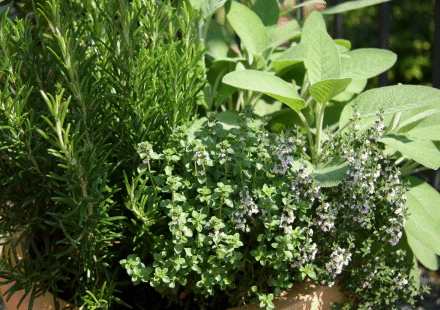
Many foods, especially fruits and vegetables, contain substances that help prevent the formation of cancers, or actively attack existing cancers. This seems to be one of the purposes of food, and is a part of the economy of nature. On the other hand, diets high in trans fat and sugar have been linked to a higher risk of colorectal cancer and other health problems. In the move from animal to vegetable fats, food manufacturers have found it necessary to hydrogenate vegetable oils in order to prevent them from going rancid. However, this process also results in the formation of trans fats, which are therefore present in most processed and fast food. Sugar is added to many foods to stimulate the taste buds, and make us want to eat more of that food.
For cancer prevention, a diet containing high quality fruits and vegetables, and low in processed and junk foods is essential. Ideally, fruit and vegetables should not only be free of herbicides, fungicides and pesticides etc., but should also be grown on soil that has not been depleted of natural minerals and nutrients. A number of experts have pointed out that for cancer treatment rather than prevention, it may be too late for a dietary regime alone to result in a cure. Concentrated extracts should also be considered. However, to maintain or regain health, the importance of a wholefood diet cannot be over-emphasized.
Artemisia (Wormwood) has been used by Chinese herbalists for more than a thousand years in the treatment of many illnesses, such as skin diseases and malaria. The earliest record dates back to 200 BC, in the “fifty-two Prescriptions” unearthed from the Mawangdui Han Dynasty Tombs. Its antimalarial application was first described in Zhouhou Beji Fang (“The Handbook of Prescriptions for Emergencies”), edited in the middle of the fourth century by Ge Hong. According to one of these recipes the ancient Chinese used an extract of wormwood to combatmalaria. Artemesinin was first isolated in 1972, and synthesized in 1983. Chinese scientists have shown artemisinin has significant anticancer effects against human hepatoma cells that Artemisinin has a peroxide lactone grooup in its structure. It is thought that when the peroxide comes into contact with high iron concentrations (common in cancerous cells), the molecule becomes unstable and releases reactive oxygen species. It has shown to reduce angiogencesis and the expression of vascular endothelial growth fator in some tissue cultures.
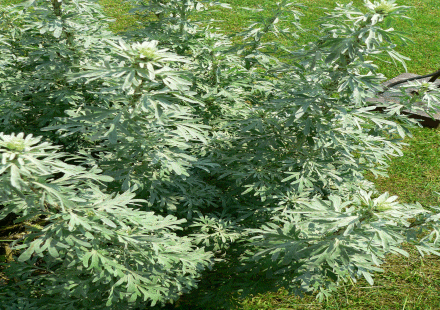
Cat’s Claw
The two closely related species of the thorned vine known as cat’s claw (Uncaria tomentosa and Uncaria guianensis), are traditional herbal remedies from the Amazon rainforest. The popular use of cat’s claw as a folk medicine has prompted a number of scientific studies into its efficacy. Although more research is required, it seems clear that the herb has potent immuno-booster properties, and may thus be useful for cancer patients. Other properties claimed for cat’s claw include pain relief, inflammation reduction, blood cleansing, bowel cleansing, and the reduction of both blood pressure and cholesterol. It is also said to kill cancer and leukemia cells, and to be diuretic, antioxidant, and antiviral.
Cat’s claw is used in nootropic drugs, as well as in treatment of cancer and HIV infection. It contains several alkaloids that are responsible for its medical effects, as well as tannins and various phytochemicals. The chemotype of the plant determines the dominant type of alkaloid it produces, and thus its properties in vivo. One chemotype has roots which produce mostly the pentacyclic alkaloids that are responsible for the immune-strengthening effects desired by most consumers. The second chemotype produces tetracyclic oxindole alkaloids known as rhynchophylline and isorhynchophylline which counteract the immune-strengthening actions of the pentacyclic alkaloids, reduces the speed and force of the heart’s contraction, and in high doses produce ataxia, lack of coordination and sedative effects. Since U. tomentosa comes in at least these two different chemotypes, without chemical testing it is impossible to know which chemical compounds will predominate in a plant collected randomly from a natural setting.
Some ingredients appear to act as anti-inflammatory, antioxidant and anticancer agents. As an herbal treatment, Cat’s Claw is used to treat intestinal ailments such as Crohn’s disease, gastric ulcers and tumors, parasites, colitis, gastritis, diverticulitis and leaky bowel syndrome, while manufacturers claim that Cat’s claw can also be used in the treatment of AIDS in combination with AZT, the treatment and prevention of arthritis and rheumatism, diabetes, PMS, chronic fatigue syndrome, prostate conditions, immune modulation, Lyme disease and systemic lupus erythematosus. A 2005 review of the scholarly literature on Cat’s Claw indicates there is supporting evidence toward its use in treating cancer, inflammation, viral infection and vascular conditions, and for its use as an immunostimulant, antioxidant, antibacterial and CNS-related agent
Cat’s claw contains several groups of phytochemicals that account for most of these properties. Firstly, there is a group of oxidole alkaloids with documented immuno-stimulant and antileukaemic properties. Then there are quinovic acid glycosides, which are anti-inflammatory and antiviral. Antioxidants (tannins, catechins and procyanidins) as well as plant sterols (beta-sitosterol, stigmasterol, and campesterol) also account for the plant’s anti-inflammatory properties. And the plant’s carboxyl alkyl esters have demonstrated immuno-stimulant, anti-inflammatory, anti-cancerous, and cell-repairing properties.
Complement all herbal cancer treatments with a Royal Rife Digital Machine.
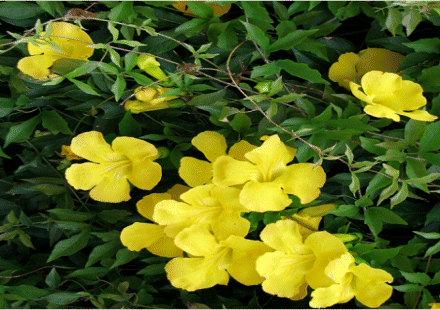
Currently there is considerable interest among oncologists to find anticancer drugs in Chinese herbal medicine (CHM). Recently there have been encouraging results, from a western perspective, in the cancer research field regarding the anticancer effects of CHM.
Experiments showed that CHM played its anticancer role by inducing apoptosis and differentiation, enhancing the immune system, inhibiting angiogenesis, reversing multidrug resistance (MDR), etc. Clinical trials demonstrated that CHM could improve survival, increase tumor response, improve quality of life, or reduce chemotherapy toxicity, although much remained to be determined regarding the objective effects of CHM in human in the context of clinical trials.
Interestingly, both laboratory experiments and clinical trials have demonstrated that when combined with chemotherapy, CHM could raise the efficacy level and lower toxic reactions. These facts raised the feasibility of the combination of herbal medicines and chemotherapy, although much remained to be investigated in this area.
Chineese Medicine Cancer Treatment:
– Rei Shi and various mushrooms
– Lu Feng Fang: Hornet Nest
– Long Kui: Solanum
– Ban Zhi Lian: Scutellaria
– Dong Ling Cao: Rabdosime Rubescentis
– Bai Hua She She Cao: Oldenlandia
– yi-yi-jen: Chinese pearl barley, or Jobs’s tears,
– Yang Shen: Panax (Red) Ginseng
– Astragalus: Huang Qi
The Main Chinese Herbal combinations Used for Cancer Treatment are
Breast cancer herbs: oldenlandia (20 %), taraxacum (20 %), scutellaria (20 %), aurantium (20 %), curcuma (20 %)
Stomach cancer herbs: oldenlandia (40 %) and imperata (30 %) or use scutellaria (15%) and imperata (15%)
Esophageal cancer herbs: oldenlandia (25 %), scutellaria (25 %), imperata (25 %), cotton root (25 %)
Colon cancer herbs: oldenlandia (60 %), scutellaria (15 %), solanum (60 %), sanguisorba (30 %), viola (15 %)
Ovarian cancer herbs: oldenlandia (20 %), scutellaria (30 %), solanum (30 %), turtle shell (20 %)
Lung cancer herbs: scutellaria (50 %), taraxacum (12.5 %), ophiopogonis (12.5 %), oldenlandia (25 %)
Liver cancer herbs: oldenlandia (30 %), scutellaria (30 %), phragmites (10 %), peonae alba (30 %)
Complement a Traditional Chinese Herbal Medicine treatment with a Royal Rife Digital Machine.
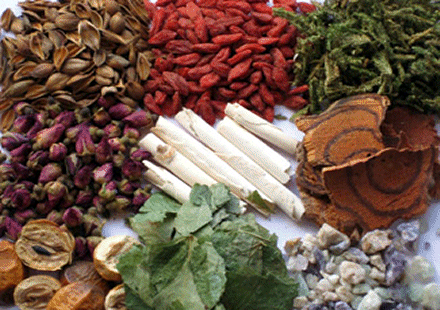
Curcumin (Tumeric) Cancer Treatment
Tests by a team at the Cork Cancer Research Centre (2009) show that Curcumin can destroy gullet cancer cells in the lab. Cancer experts said the findings in the British Journal of Cancer could help doctors find new treatments. Dr Sharon McKenna and her team found that curcumin started to kill cancer cells within 24 hours.
The cells also began to digest themselves, after the curcumin triggered lethal cell death signals. Dr McKenna said: “Scientists have known for a long time that natural compounds have the potential to treat faulty cells that have become cancerous and we suspected that curcumin might have therapeutic value.”
Dr Lesley Walker, director of cancer information at Cancer Research UK, said: “This is interesting research which opens up the possibility that natural chemicals found in turmeric could be developed into new treatments for oesophageal cancer.
“Rates of oesophageal cancer have gone up by more than a half since the 70s and this is thought to be linked to rising rates of obesity, alcohol intake and reflux disease so finding ways to prevent this disease is important too.”
Indications are that Curcumin is not only a powerful antioxidant, but also induces natural cell death (apoptosis). It can be used as either the dried powder (say, 1 teaspoonful) in a morning juice, or by juicing a small quantity (say, 4 inches or 50 gms) of fresh turmeric root (available from Asian grocery stores), with a morning carrot and apple juice. No optimal dose of curcumin for cancer cure or prevention has been determined, although there appears to be no danger of overdosing. Note that there are some instances when curcumin in not recommended (see below). Moreover, although curcumin is known to cause the death of cancer cells, it has also been shown to counteract the effect of some chemotherapy drugs, but not methotrexate and fluorouracil (5FU).
The presence of curcumin in the gastrointestinal tract has been shown to inhibit the progress of colorectal cancer. Because curcumin absorption is greatly aided by the presence of piperine, the spicy substance in black pepper (Piper nigrum), it makes sense to add ground black pepper to the curcumin. In fact, piperine has also been shown to be effective in increasing the absorption of certain essential substances such as vitamin B, beta-carotene and selenium. One study indicates that the use of 20 mg of piperine enhances the absorption of 2 grams of curcumin by around 2000%. Recommended daily intake is between 5 mg and 15 mg.
Complement a Curcumin (Turmeric) treatment with a Royal Rife Digital Machine.

Essiac Tea Cancer Treatment
Rene Caisse devoted over fifty years of her life to treating hundreds of cancer patients with Essiac.
So effective were her treatments that in 1938 her supporters gathered 55,000 signatures for a petition, amongst other petitions, to allow Rene Caisse to continue treating cancer patients.
Rene Caisse ‘s Essiac formula is said to have originated with a Native American herbalist in Northern Ontario, who successfully treated an English woman for breast cancer towards the end of the nineteenth century. A limited scientific trial failed to find any anti-cancer benefit from its use, but the herbal mix is relatively inexpensive and considering the positive anecdotal evidence, it’s worth trying. Like so many cancer treatments, mainstream and otherwise, it is possible that Essiac works with some people, but not others, though why this should be so is uncertain. There can be a number of reasons.
The formula consists of the entire dried and powdered sheep sorrel plant (Rumex acetosella), chopped and dried burdock root (Arctium lappa), the dried and powdered bark of the slippery elm tree (Ulmus rubra), and the dried and powdered root of the ornamental turkey rhubarb plant (Rheum palmatum).
BURDOCK ROOT (Arctium lappa)
For centuries burdock root has been regarded as an effective blood purifier that neutralizes and eliminates poisons from the body. Burdock contains a volatile oil–especially in the seeds–that is eliminated through the sweat glands, taking toxins with it and alleviating skin problems. Burdock contains niacin, which is known to eliminate poisons from the body, including radiation. Burdock also supports the bladder, kidney and liver and has been said to dissolve kidney stones. It also contains an abundance of minerals, particularly iron. Studies have shown anti-tumor activity in burdock. Japanese scientists have isolated an anti-mutation property in burdock, which they call the “B factor”. The Japanese grow burdock root for food as well as medicine. A memorandum from the World Health Organization revealed that burdock was active against HIV.
SHEEP SORREL (Rumex acetosella)
Rene Caisse isolated sheep sorrel as the main Essiac herb that caused regression of metastasized cancer and reduction of tumors. She used the whole herb including sheep sorrel roots. Dr. Ralph Moss points out that sheep sorrel contains aloe emodin, a natural substance that shows significant anti-leukemic activity. Sheep sorrel contains antioxidants, is diuretic and has been used to check hemorrhages. Sheep sorrel is a traditional food of native cultures and is still served in fine restaurants along with other sorrels.
SLIPPERY ELM (Ulmus rubra/fulva)
The inner bark of the slippery elm tree is well-known for its soothing and healing properties. It reduces inflammations such as sore throat, diarrhea and urinary problems. It has been regarded as both a food and medicine. Dr. Moss noted that “slippery elm contains beta-sitosterol and a polysaccharide, both of which have shown anti-cancer activity.
TURKEY RHUBARB ROOT (Rheum palmatum)
Turkey Rhubarb has been shown to have anti-tumor activity. It is diuretic, anti-inflammatory, anti-bacterial and has been used extensively to relieve constipation. It is medicinally more potent than garden rhubarb root and is more palatable. CLICK HERE for more information about the rhubarb root in Essiac tea.
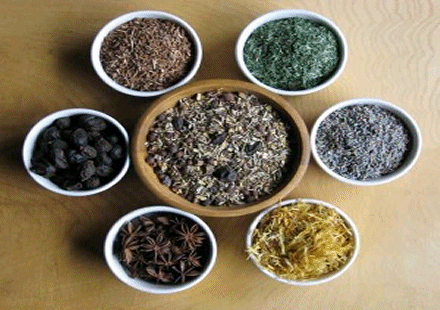
Field Bindweed Cancer Treatment
Convolvulus arvensis (Field Bindweed) is a species of bindweed, native to Europe and Asia. It is a climbing or creeping herbaceous perennial plant growing to 0.5-2 m high. The leaves are spirally arranged, linear to arrowhead-shaped, 2-5 cm long, with a 1-3 cm petiole. The flowers are trumpet-shaped, 1-2.5 cm diameter, white or pale pink, with five slightly darker pink radial stripes. Among the various substances known to inhibit angiogenesis are an extract of this field bindweed (Convolvulus arvensis) and MPGC (Muramyl polysaccharide-glycan complex), a cell wall extract from the bacterium Lactobacilus fermentum. Both suppress VEGF levels.
To grow bigger than 2mm, tumors need to develop their own blood supply (angiogenesis). The Field Bindweed is a powerful anti-angiogenesis. So one of the more promising of the targeted approaches to cancer is therefore to prevent the development of a blood supply to a cancerous tumor. If this can be accomplished, tumor cells cease proliferation. Abnormally high levels of angiogenic peptides, known as VEGF (vascular endothelial growth factors), are associated with poor prognosis and decreased survival time in cancer patients. Conversely, there is encouraging data that VEGF suppression results in a more positive outcome.
Angiogenesis-Suppressing Proteoglycan Molecules
Bindweed extract contains angiogenesis-suppressing proteoglycan molecules (PGMs), and MPGC regulates the production of a potent angiogenesis inhibitor, interleukin 12 (IL-12). Suitable commercial products are manufactured by Aidan Incorporated as C-Statin and Imm-Kine.
Anti-angiogenesis formulae should not be taken where the formation of new blood vessels is desirable, e.g. heart disease or an actively healing wound. They should always be taken in consultation with a doctor, and should not be taken for two weeks before and after surgery, or during pregnancy or lactation.
In the US, Commercial Products are manufactured by Aidan Incorporated as C-Statin and Imm-Kine.
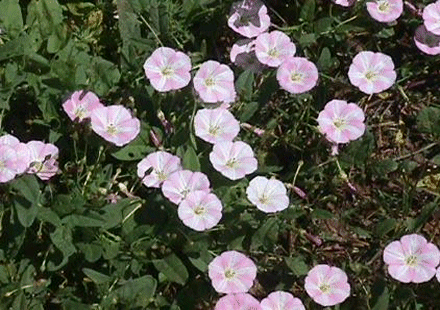
Ginseng Cancer Treatment
Ginseng is a deciduous perennial plant that belongs to the Araliaceae family. Currently, twelve species have been identified in the genus Panax. Among them, Panax ginseng C. A. Meyer (Araliaceae), cultivated in China, Korea, Japan, Russia, and the US, P. quinquefolium L (American ginseng), grown in southern Canada and the US and P. notoginseng, cultivated in Yunnan and Guangxi provinces in China, represent the three most extensively investigated species.
According to the studies in China (Department of Biochemistry, Faculty of Medicine, Chinese University of Hong Kong), the anti-tumour effects of ginsenosides include its ability to induce Cancer cell death (such as apoptosis and necrosis), and having effects of anti-proliferation, anti-invasion and metastasis, and anti-angiogenesis.
Inducing Cancer cell death: Several compounds found in ginsenosides have been shown to induce apoptosis in prostate cancer cells, ovarian cancer cells, neuroblastoma cells and lung adenocarcinoma cells. The induction of tumour cell death by ginsenosides may be one of the mechanisms in the elimination of tumour cells, the writers say.
Anti-proliferation: Ginsenosides also have preventative effects by inhibiting the cell cycle progression. They have been shown to arrest the growth of human tumour cell lines in lung tumour cells, prostate carcinoma cells, leukuemia cells, and hepatoma (liver cancer) cells.
Angiogenesis-Suppressing Proteoglycan Molecules
Anti-invasion and anti-metastasis: Cancer metastasis is a complex process involving angiogenesis and cell-cell interactions. What is cancer metastasis? Metastasis is the spread of cancer from its primary site to other places in the body. Cancer cells can break away from a primary tumour, penetrate into lymphatic and blood vessels, circulate through the bloodstream, and grow in a distant focus (metastasize) in normal tissues elsewhere in the body.
Tumours are classified as either benign or malignant. Malignant tumours can spread by invasion and metastasis whilst benign tumours cannot (and only grow locally). Metastatic tumours are very common in the late stages of cancer. The spread of metastases may occur via the blood or the lymphatics or through both routes. The most common places for the metastases to occur are the adrenals, liver, brain and the bones. There is also a propensity for certain tumours to seed in particular organs.
Scientists recently demonstrated that the invasiveness of some endometrial cancer cells (including those of the uterus) was inhibited by treating them with a certain types of ginsenosides. The inhibitory effect is due to suppression of MMP-2 expression.
What are matrix metalloproteinases (MMPs)? MMPs are capable of degrading all kinds of extracellular matrix proteins. MMPs are also thought to play a major role on cell behaviours such as cell proliferation, migration (adhesion/dispersion), differentiation, angiogenesis, apoptosis and host defense.
The anti-invasive effects of several ginsenosides include the abilities to significantly inhibit in vitro invasion of hepatoma cells, melanoma cells, human lung carcinoma and pancreatic cancer cells. Ginsensodies have also been shown to inhibit lung metastasis, reduce the weight of tumours in lung, breast, gastric and melanoma cancers.
Anti-angiogenesis effects: Angiogenesis is a physiological process involving the growth of new blood vessels from pre-existing vessels. Excessive angiogenesis has been defined as a prominent pathological feature of many diseases such as tumour, rheumatoid arthritis, atherosclerosis, psoriasis and diabetic retinopathy (”diabetic eyes”).
According to the present report, numerous recent studies have demonstrated several ginsenosides exert an anti-angiogenic action in different animal models when administered alone or in combination with other conventional chemicals, such as human breast infiltrating duct carcinoma, ovarian carcinoma cells, melanoma cells and colon carcinoma. These data indicate that one of the mechanisms of anti-metastatic effect of ginsenosides is probably related to suppression of tumour-induced angiogenesis.
The researchers say that both gensensides Rg3 and its metabolite form Rh2 have emerged in Mainland China and Taiwan as anti-cancer drugs in the form of capsules (e.g. ‘Rg3 Shenyi Jiaonang’ and ‘GOOD LIFE ginsenoside Rh2 capsule’). Rg3 Shenyi Jiaonang suppresses tumour angiogenesis and prevents adhesion, invasion and metastasis of tumour cells. Rh2 as an adjuvant agent was also tested in the nude mouse model with human ovarian cancer cells transplanted. In the presence of Rh2, cisplatin could significantly inhibit tumour growth in vivo and prolong survival time. Neither Rh2 nor cisplatin alone could inhibit tumour growth. It was shown that chemotherapy supplemented with Rh2 is 60% more effective than chemotherapy alone. It could also mitigate the adverse effects of hair loss, anemia, nausea, vomit and poor appetite following chemotherapy or radiotherapy.
Both Rg3 and Rh2 are extracted from red ginseng which is processed by steaming and drying. During the process, the malonyl group at the C-6 is released and the glycosyl moiety at C-20 is partially detached to generate Rh1, Rh2 and Rg3 through deglycosylation similar to the deglycosylated product, compound K generated from the metabolic transformation of ginsenoside Rb1 by intestinal bacteria. However, whether all of the ginsenosides generated by such post-treatment of white ginseng have similar anti-tumour effects are still not known.

Mistletoe Cancer Treatment
Mistletoe was first proposed for the treatment of cancer in 1920 by Rudolph Steiner, an Austrian Swiss physician who founded the Society for Cancer Research to promote mistletoe extracts and anthroposophical medicine.
Mistletoe preparations are used to stimulate the immune system, to kill cancer cells, and to help reduce tumor size. It may also help improve the quality of life and survival of some cancer patients, especially those using chemo and radiation, and may help reduce pain and side effects of these treatments. In addition, a German study done by Dr. Ronald Grossarth-Maticek of the Institute for Preventive Medicine in Heidelberg shows that, when used as adjunctive treatment in patients with a variety of cancers, it can increase survival time by as much as 40%.
Mistletoe contains cytotoxic proteins and polypetides
A typical treatment Mistletoe course can last several months to years. The doses are gradually increased and adjusted depending on the patient’s general condition, sex, age, and type of cancer. Mistletoe is typically given by subcutaneous injection, but it sometimes is injected directly into the tumor particularly on the liver, esophagus and cervix. It may also be taken orally in tumors of the brain and spinal cord.
Mistletoe contains a cytotoxic lectin, viscumin. It also contains a number of cytotoxic proteins and polypetides (viscotoxins). Various lectins are both cytotoxic and immunostimulatory. It induces tumor necrosis, increases natural killer cell activity, increases production of interleukins 1 and 6; activates macrophages; induces programmed cell death (apoptosis), and protects DNA in normal cells during chemotherapy.
Of the several species of mistletoe, only Viscum album, the white-berried European mistletoe, is used therapeutically. Mistletoe’s anti-cancer properties are believed to arise from its toxic constituents, viscotoxins and lectins. Because of its toxicity, mistletoe extract needs to be prepared by carefully controlled processes. Extracts are administered either orally or by subcutaneous injection. Because of the negative indications and potential side effects, it is wise to seek professional medical advice before using any mistletoe extract. It is also worth bearing in mind that mistletoe belongs to the ivy family, to which some people are allergic. European mistletoe extracts are sold under brand names such as Iscador, Isorel, Vysorel, and Helixor.
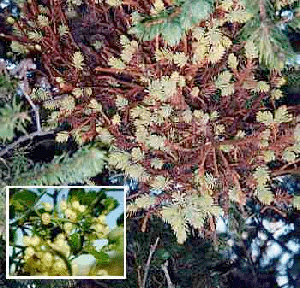
The Madagascar Periwinkle Cancer Treatment
As far back as the 1950s, scientists discovered that the traditional herbal remedy, the Madagascar periwinkle (Vinca rosea or Catharanthus roseus) contained medicinally active ‘vinca alkaloids’, among which were the first phytochemicals used to treat cancer.
C. roseus has gained interest from the pharmaceutical industry; the alkaloids vincristine and vinblastine from its sap have been shown to be an effective treatment for leukaemia and lymphoma. Although the sap is poisonous if ingested, some 70 useful alkaloids have been identified from it including alstonine, ajmalicine, reserpine, vincamin, camptothecin, vinblastine, and vincristine (leurocrystine), all possessing powerful medicinal properties. Vinblastine, vincristine and other semi-synthetic derivatives inhibit division of cancer cells and are commonly used in conventional chemotherapy, exhibiting the usual range of chemotherapy side effects. All are extremely toxic. Vinblastine is used to treat Hodgkin’s disease, non-Hodgkin’s lymphoma, and testicular and kidney cancer. Vincristine is usually given in combination with other anti-cancer agents to treat acute lymphocytic leukaemia, lymphoma, neuroblastoma, rhabdomyosarcoma, Wilm’s tumour, Ewing’s sarcoma, and cancers of the breast, cervix, bladder and lungs.
In Madagascar, extracts have been used for hundreds of years in herbal medicine for the treatment of diabetes, as hemostatics and tranquilizers, to lower blood pressure, and as disinfectants. The extracts are not without their side effects, however, which include hair loss.
Mistletoe contains cytotoxic proteins and polypetides
The most important plant source of materials used in chemotherapy are the alkaloids of the Madagascar Periwinkle. Research was stimulated by its traditional use in the treatment of diabetes. No hypoglycaemic activity was detected, but the susceptibility to bacterial infection in the treated test animals led the researchers to look for possible immunosuppressive effects. Alkaloids with anti-leukemic activity were found, and vincaleukoblastine(vinblastine) and leurocristine (vincristine), are now used, either alone, or in combination with other forms of therapy for cancer treatment.
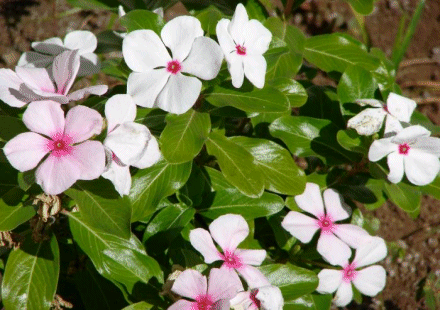
For Cleansing go to Dr. Clark Cleanses

